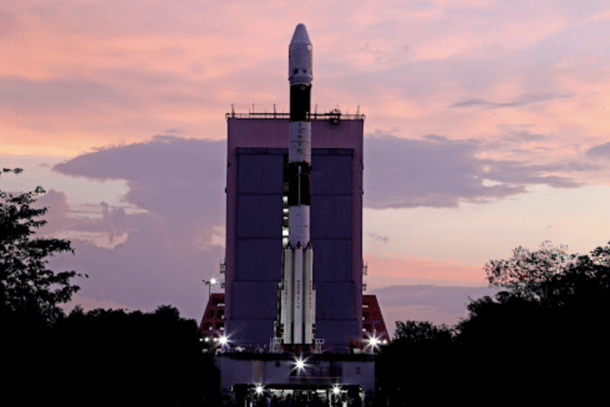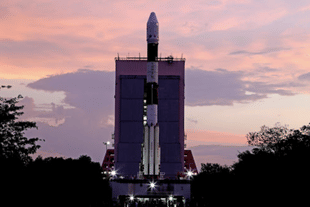Science
Aditya L-1, India's First Mission To Study The Sun, All Set For Launch Today
Swarajya Staff
Sep 02, 2023, 09:27 AM | Updated 09:27 AM IST
Save & read from anywhere!
Bookmark stories for easy access on any device or the Swarajya app.


Isro is in the final stages of preparations for the launch of Aditya-L1, India's first solar space observatory mission. After several years of development, the launch is scheduled for 11.50 am on Saturday (2 September).
Aditya-L1 will be launched in PSLV's 59th flight.
The spacecraft will be placed in a highly eccentric Earth-bound orbit by the PSLV in its XL configuration.
From there, the spacecraft will use its liquid apogee motors (LAM) to perform multiple orbital manoeuvres.
These powerful engines will play a critical role in taking the spacecraft to its destination, the Lagrange Point-1 (L1), which is approximately 1.5-million-km away.
This distance is 1/100th the distance between Earth and the Sun.
Aditya-L1 is a satellite dedicated to the comprehensive study of the Sun. It consists of seven distinct payloads, five of which have been developed by Isro and two by academic institutions in collaboration with Isro. All of these payloads have been developed indigenously.
Aditya, which means the Sun in Sanskrit, is named after the Lagrange Point 1 (L1) in the Sun-Earth system. L1 is a location in space where the gravitational forces of the Sun and Earth are balanced, allowing objects placed there to remain stable.
After its planned launch on September 2, Aditya-L1 will spend 16 days in Earth-bound orbits. During this time, it will undergo five manoeuvres to gain the necessary velocity for its journey.
Following the initial phase, Aditya-L1 will undergo a Trans-Lagrangian Insertion (TLI) manoeuvre, marking the start of its 110-day trajectory towards the L1 Lagrange point. Once it reaches the L1 point, another manoeuvre will bind Aditya-L1 to an orbit around L1, which is a balanced gravitational location between the Earth and the Sun.
Throughout its mission, the satellite will orbit around L1 in an irregularly shaped orbit that is roughly perpendicular to the line connecting the Earth and the Sun. This orbit will be maintained for the entirety of its mission.
The placement of Aditya-L1 at the L1 Lagrange point ensures a constant and uninterrupted view of the Sun. This strategic location allows the satellite to observe solar radiation and magnetic storms before they are influenced by Earth's magnetic field and atmosphere.
Furthermore, the gravitational stability of the L1 point minimizes the need for frequent orbital maintenance, optimizing the operational efficiency of the satellite.
Following the success of India's lunar mission, Chandrayaan-3, Aditya-L1 marks a new venture for ISRO into the study of solar activities and their impact on space weather.
The scientific objectives of Aditya-L1 encompass the study of various phenomena such as coronal heating, solar wind acceleration, coronal mass ejections (CMEs), dynamics of the solar atmosphere, and temperature anisotropy.
To achieve its goals, the spacecraft is equipped with seven scientific instruments. The main payloads include the Visible Emission Line Coronagraph (VELC), which is used for corona imaging and spectroscopy studies, and the Solar Ultraviolet Imaging Telescope (SUIT), which is used for narrow and broadband imaging of the photosphere and chromosphere.
The other instruments on board are the Solar Low Energy X-ray Spectrometer (SoLEXS), which is used for soft X-ray spectrometry and observing the Sun as a star; the High Energy L1 Orbiting X-ray Spectrometer (HEL1OS), which is used for hard X-ray spectrometry and observing the Sun as a star; the Aditya Solar wind Particle Experiment (ASPEX), which studies the solar wind; the Plasma Analyser Package for Aditya (PAPA), which analyzes particles in the solar wind; and the Advanced Tri-axial High Resolution Digital Magnetometers, which are used for in-situ magnetic field studies.





